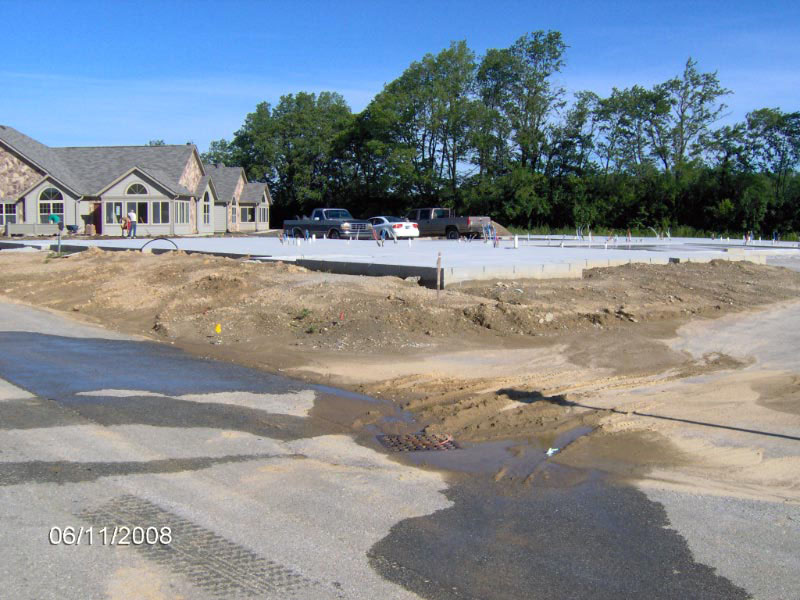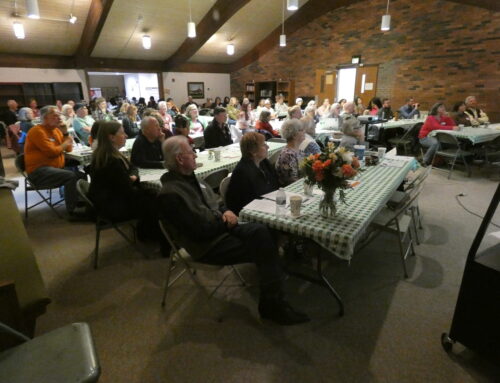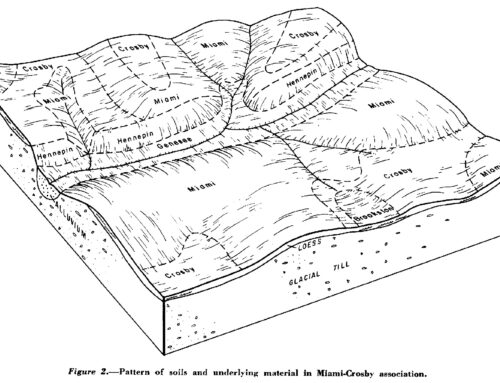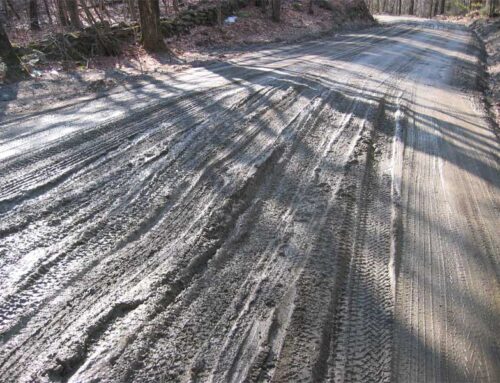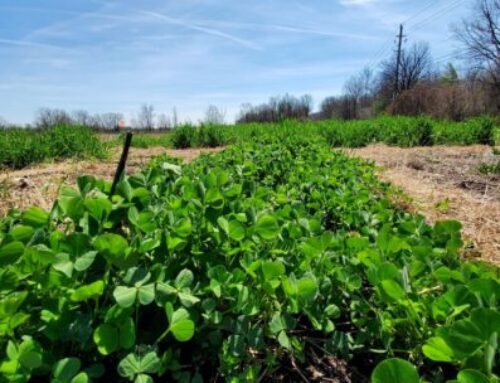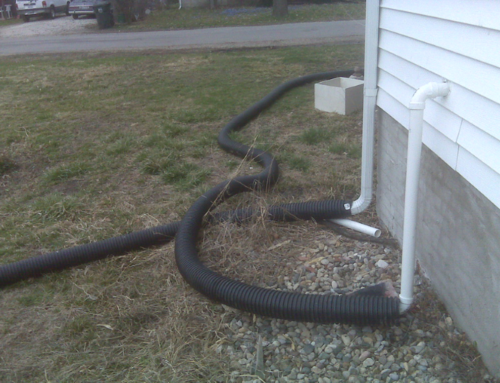During Marion County’s rainy season, we can expect rainfall events of around 3 inches.
That much rain over the county is just over 21 billion gallons (about 87 million tons) of
water. Water in significantly smaller quantities still has a high chance of causing erosion
throughout construction sites even with the proper measures in place. Erosion control
measures are to reduce the movement of sediment offsite, but proper maintenance and
inspections can prevent it. The following are areas that inspectors should thoroughly
check in preparation for and after rainfall events of at least 0.5 inches.
Stockpiles
Stockpiles should always have erosion control measures around them. Measures such
as silt fence and wattles are the first line of defense against the movement of sediment
from its designated area. Be sure to leave room between the chosen erosion control
measure and the stockpile to prevent immediate sediment accumulation against the
measures in place. Once sediment begins to accumulate, the measure becomes
compromised.
If the stockpile is inactive for 14 or more days, the stockpile must be temporarily
stabilized with vegetation, or a covering tarp if possible. Once sediment begins to erode
from a large stockpile, maintenance can become an overwhelming and expensive task.

Stockpile is compromised with rills (channels within the sediment). With the
formation of rills silt fence is under significant stress and has failed in the area shown.
Inlet protection
Sediment-loaded inlet protections are common after heavy rainfall events, but they must
be cleared of sediment often to maintain proper flow of stormwater. Inlet protection is
your last line of defense before a violation occurs. If sediment begins to heavily
accumulate within or around inlet protections, flooding can occur along with the
possibility of sediment leaving the permitted site.
The presence of sediment after light rain exposes a bigger issue with perimeter
protection.

With improper maintenance after rain events, the inlet is being inhibited from
draining efficiently.
Perimeter Protection
When installed correctly, perimeter protection prevents sediment from leaving a
designated area. They are important to restrain the movement of sediment in stockpiles
or from soil disturbance near hardscapes. Without effective perimeter protection,
sediment can flow offsite through storm drains or over bare soil areas. Sediment
removal is a messy process and the difficulty to remediate depends on the material
being kept back. Always ensure your perimeter protection is installed according to the
manufacturer's guidelines. Common perimeter protections include wattles, filter socks,
and silt fencing.

Effective wattle placement prevents movement of sediment from leaving
permitted site.
Construction Entrance
Construction entrances are the most visible part of a permitted site and tend to cause
the most violations. During and after heavy rain events, construction entrances tend to
degrade faster due to the amount of heavy machinery coming through with mud-caked
wheels. Once the construction entrance becomes too muddy, track out is inevitable.
The three most important aspects of a construction entrance are a base of geotextile
fabric, 8 inches of No.2 aggregate stone, and a dimension of at least 12 feet wide and
50 feet long. The rough surface of the entrance cleans truck tires before they enter
public roads. The geotextile fabric helps prevent the stone from sinking into the
surrounding soil. Construction entrances must be maintained frequently.
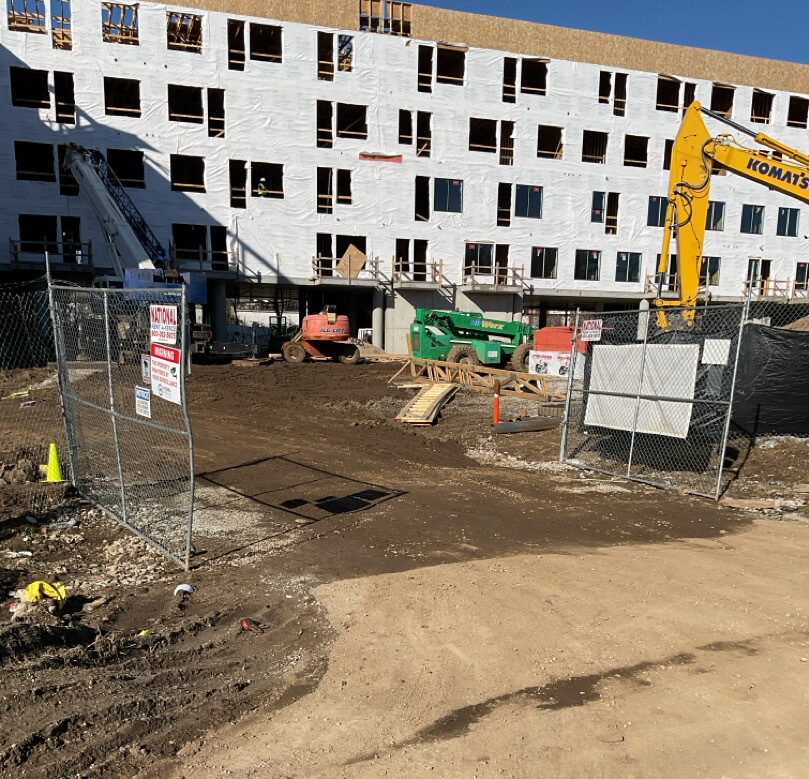
After rain events and lack of maintenance this construction entrance has
become ineffective and is causing track-out.
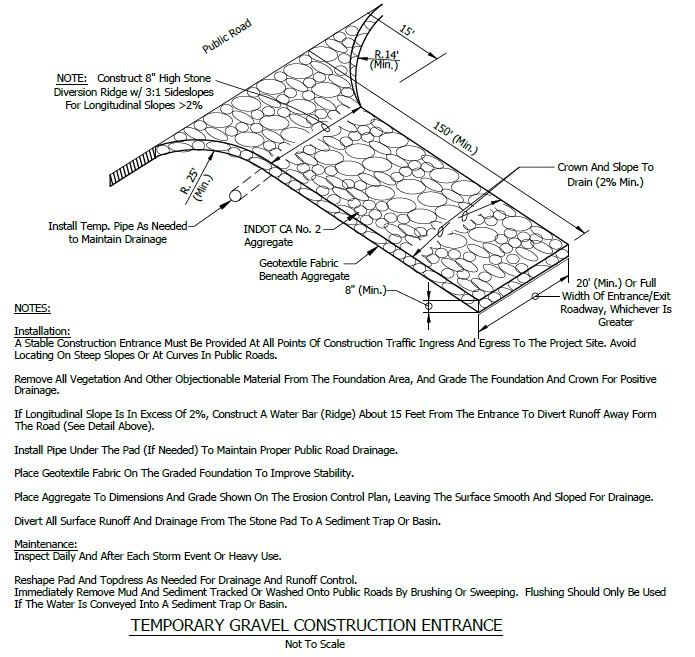
A diagram of an optimal construction entrance
Concrete Washout Bags
Concrete washout bins are more commonly used, but there are times when concrete
washout bags are better suited for a specific activity or area. Effort should be made to
ensure that concrete washout bags are not easily filled with water during rain events. If
concrete washout bags are filled with rain, removal can be quite difficult without spillage.
A rainfly is recommended during rain events when bags cannot be safely removed due
to being wet. Once the concrete waste has dried, the bag can be safely removed.

A concrete washout bag left in the rain which will cause removal to be difficult.

